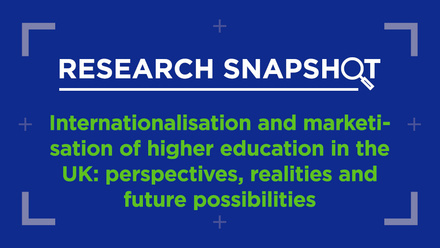Furthering internationalisation in Hungary

Hungary has recently made headlines around the globe with the controversial higher education law passed in 2017, which particularly endangered (and continues to threaten) the operations and very survival of the Central European University (CEU) in Budapest. This remains a critical matter, one that touches on the very essence of academic freedom, which, according to CEU President and Rector Prof Michael Ignatieff in his recent interview for the 2018 Summer Forum: (Inter)national policies and politics, "is not the privilege of spoiled professors, but it’s an absolutely critical pillar of democracy itself".
Without minimising the seriousness of this situation or the necessity of a proper and immediate resolution, there’s certainly more than meets the eye when it comes to internationalisation of higher education in Hungary. What has less often been reported in recent years, are the continuous efforts of Hungarian higher education institutions to further internationalise, to open up and become more visible on the international higher education scene. And while it may seem paradoxical, many of these efforts are supported by national-level initiatives. This post offers two examples of such national programmes, which are less often featured and yet are meaningful for the country itself and for the region.
Many of the national-level initiatives in Hungary primarily revolve around supporting international student mobility – both incoming and outgoing, degree and credit. Mobility is nevertheless seen as a tool, or a first step, towards broader and deeper internationalisation of Hungarian higher education institutions and of the higher education system in its entirety.
Inbound mobility support
One example is the Stipendium Hungaricum programme, a governmental initiative started in 2013 and designed to support internationalisation by giving participating universities the opportunity to increase the number of students that enrol from abroad. The goal is to enrich these universities’ cultural diversity, strengthen their international partnerships, and enhance the quality of their education. In essence, the programme provides tuition-free education, monthly stipends, housing allowances and health insurance for applicants from the partner countries.
Many of the national-level initiatives in Hungary primarily revolve around supporting international student mobility – both incoming and outgoing, degree and credit.
According to data released by the Tempus Public Foundation (TPF), the national-level agency that coordinates the programme, in the academic year 2016–17 nearly 60 sending partners from five different continents participated in this programme. In total, 26 Hungarian universities participated in 2017–2018, with two more joining in 2018–2019. As for the incoming student numbers (scholarship holders), these grew from 68 students in 2013 to 5148 students in the 2017–2018 academic year. All in all, just over 15% of all international students in Hungary are Stipendium Hungaricum scholarship holders. Doctoral students accounted for the biggest growth within the programme, with currently 52% of all international PhD students in Hungary being supported by this programme.
Scholarship programmes of this magnitude, while encountered in some countries in Western and Northern Europe, are certainly far from standard in the Central and Eastern parts of the continent. These increases in incoming student numbers were accompanied by other significant transformations, including increases in the provision of English-taught programmes in Hungary and a wider preoccupation with curriculum development, student services and the overall quality of education.
Outbound mobility, strategic internationalisation and quality enhancement
To support the development of (international) student services and to help enhance the adaptive and intercultural competencies of Hungarian higher education institutions, the government, with co-funding from the European Union (under the European Social Fund), launched the Campus Mundi programme in 2016. This works as the counterpart to the Stipendium Hungaricum programme and is likewise coordinated by TPF. In addition to providing outbound mobility scholarships for Hungarian students, the newer initiative primarily focuses on strategic internationalisation, seeing internationalisation as a proxy for quality enhancement in higher education.
One of the activities supported through this programme is the ‘Internationalisation quality assessment process’. This is an audit-like tool – similar to those in other countries, such as Germany (eg the HRK Internationalisation Audit) – via which participating institutions first assess their own internationalisation activities and are then further advised on their goals and activities by an expert team. By 2021, some 15 audits will have been finalised, adding to ten audits done under a predecessor programme in 2012-2015.
Scholarship programmes of this magnitude are certainly far from standard in the Central and Eastern parts of the continent.
The Campus Mundi programme also supports a number of peer-learning activities (PLAs) in areas of central importance for Hungarian higher education institutions. One such area is that of ‘mobility windows’, ie international mobility periods that are fully embedded in the curricula of study programmes. This is an area in which Hungary tries to be a trend-setter in the European context. A 2015 law mandated that all new (to be accredited) study programmes in Hungary, as of 2019–2020, must have an integrated mobility window in place. Beyond supporting the ‘within-country exchange’ and peer learning on mobility windows, Hungary is also promoting a regional approach in this area via regional events and exchanges of best practices in Central and Eastern Europe.
A complex picture
These two examples of ongoing national-level initiatives in the area of international higher education in Hungary are important to keep in mind. While national-level discourse and actions continue to threaten the academic freedom of the CEU and other institutions, these policies and their accompanying instruments luckily tell a different story, one in which higher education remains a tool to build bridges internationally, rather than to close doors.






